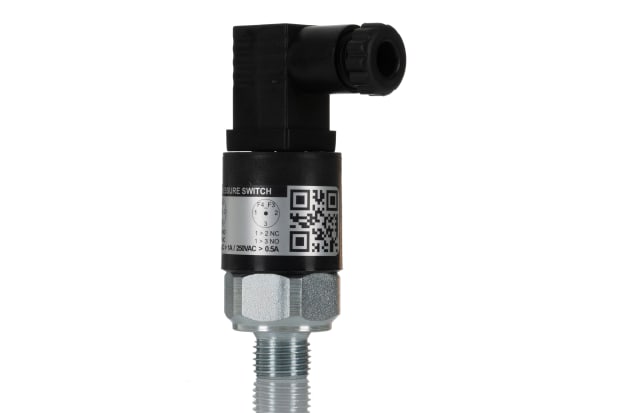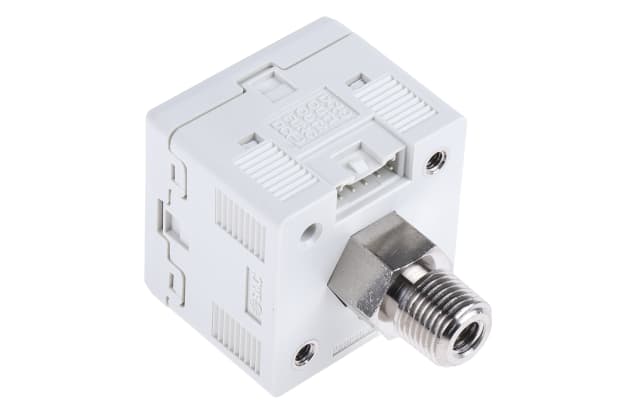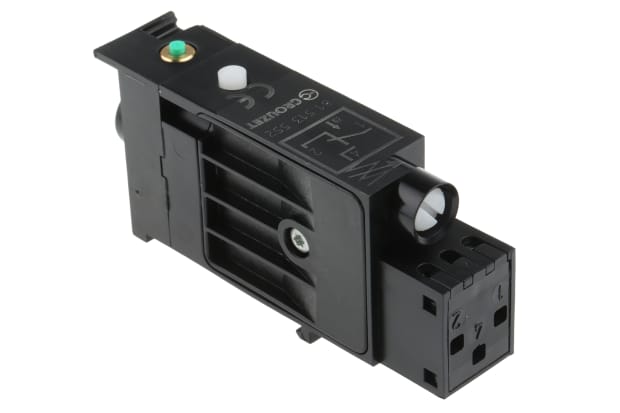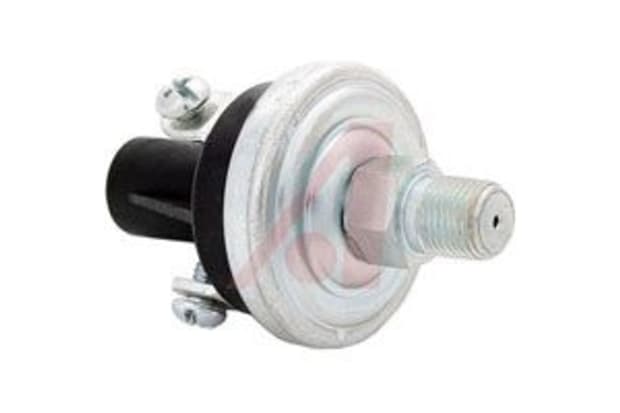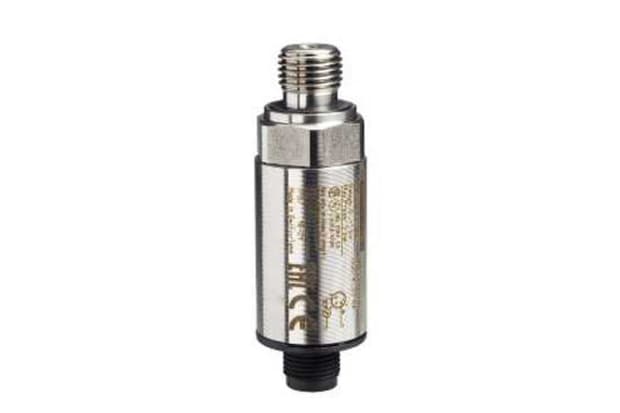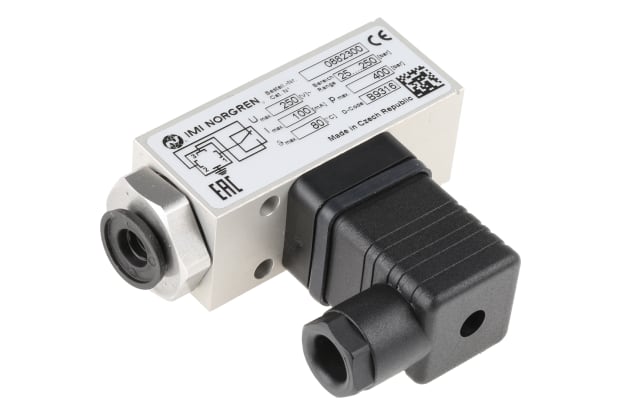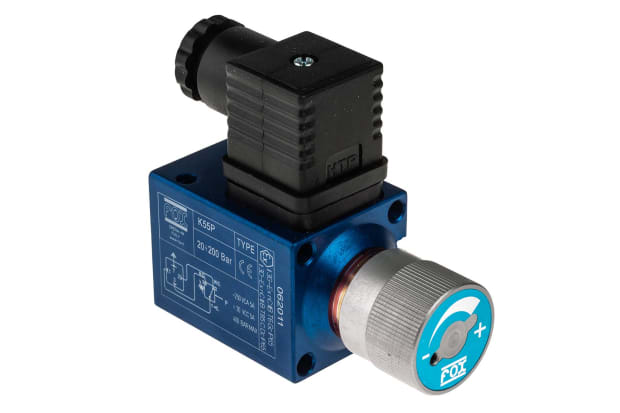- Published 24 Jan 2023
- Last Modified 29 Aug 2023
- 8 min
Vacuum & Pressure Switches - A Complete Guide
Discover more about pressure and vacuum switches, including the different types available, in this guide.

What is a Pressure Switch?
Pressure switches are devices used to measure pressure in any given environment. They are designed for monitoring and detection purposes and can be used to alert the user to lost pressure or particularly high pressure. Pressure switches are typically adjustable, and users can set pre-defined limits to enable pressure switches to work seamlessly within various systems and pneumatics.
There are many different types of pressure switch, and these versatile devices can be used for measuring a wide range of both media and pressure types. They are also available in varying sizes and specific types are designed for use within certain operating pressure parameters.
What is a Vacuum Switch?
Vacuum pressure switches are designed for sensing pressure changes in a vacuum. A pre-set point will be determined, and once this is reached or surpassed, the vacuum switch will either open or close the electrical connection.
Similarly to standard pressure switches, vacuum switches can be used in various industrial environments. This includes typical applications such as manufacturing, processing, and automation and control, as well as pneumatic and hydraulic systems. Digital vacuum switches and adjustable vacuum switches are also available.

Pressure Switch Symbol
The image to the right shows an example of how a pressure switch would be displayed in a circuit diagram. This symbol clearly shows the presence of a pressure switch in a circuit and it is used across a range of industries where pressure measurement is required.
How Does a Pressure Switch Work?
Pressure switches can typically work in one of two ways, depending on the number of ports of any particular device. The different types are known as single-port or double-port pressure switches.
With single-port pressure switches, pressure enters the device through the port and reaches a diaphragm. The device also has an internal, pre-loaded set spring which is designed to exert a certain amount of force. If the force of the pressure entering the switch is greater than the force exerted by the spring, the switch contacts will be activated. This breaks the circuit and alerts the user to the pressure change.
Double-port pressure switches work similarly but also have some key differences. Most importantly, pressure can enter the device from both ports in a two-port pressure switch. This means that pressure from each port is compared. The pressure from both ports should be the same, so these switches are designed to alert the user if this is not the case.
Pressure Switch Types
Pressure switches can be used across a wide range of environments and industries. As a result, various types of pressure switch are available to ensure each device is best suited to its particular applications.
These devices are used in industries including:
- Automotive – for example, air filters
- Medical – for example, monitoring oxygen pressure levels
- Agriculture – for example, crop-dusting machinery
- Marine – for example, water filtration
Some of the key pressure switch types are explored in greater detail in the sections below:
Differential Pressure Switches
Differential pressure switches are used to detect the difference in pressure between two set points. If pressure drops or exceeds the pre-defined value, an alert will be triggered to make or break the circuit.
Differential pressure switches are typically used for preventative maintenance. Typical applications could include energy-saving, purifying, and monitoring air filters and ventilation flow.
Hydraulic Pressure Switches
These devices are designed to detect pressure changes and either make or break the circuit accordingly. Although non-contact versions are available, hydraulic pressure switches are primarily contact switches, meaning that the device uses physical contact to gauge pressure.
Hydraulic pressure switches are often used in the automotive and aerospace industries. A typical example of their use is for alerting drivers of the fuel level within a vehicle.
Pneumatic Pressure Switches
Pneumatic pressure switches are designed to detect increases or decreases in air pressure within pneumatic systems. Various types are available, including adjustable and non-adjustable devices, and they are suitable for both pressure and vacuum applications.
These instruments can be used in manufacturing and hydraulics and are commonly used to automatically monitor the pressure in compressed air systems.
Digital Pressure Switches
Both digital and mechanical pressure switches are available. Electronic pressure switches generate electronic switch output signals using programmable, integrated logic. They may also provide additional analogue signals, depending on the specific device.
Digital pressure switches are available in both adjustable and non-adjustable formats. They offer a greater degree of flexibility and the ability to program various functions, easily adapting to the requirements of any given application.
Popular Brands
Honeywell
Browse pressure switches available from leading brand Honeywell and shop online with RS.
Telemecanique
Shop Telemecanique Sensors pressure switches and choose from a range of types, sizes, and specifications.
Norgren
With a wide range of devices available, shop Norgren pressure switches online today.
RS Pro
Shop pressure switches from RS Pro, our own in-house brand, and discover the most suitable device for your application.
How to Wire a Pressure Switch
Wiring a pressure switch will largely depend on the particular device and the application where it is being installed. As such, you should always read the manufacturer’s guidelines for your specific model and be sure to familiarise yourself with it before completing any work.
The following steps outline the basic method for wiring a pressure switch, but you should be aware that the specifics are likely to vary depending on the device and application.
- Safety first – turn off the system and/or electricity supply to create a safe working environment
- If applicable, drain water from the system
- If you are replacing an existing pressure switch, this will need to be carefully removed before the new device can be fitted
- Secure the new switch in place within the install environment. The specific method for this will depend on where it is being installed
- Remove the cover from the switch to enable access to wiring
- Depending on the device, there may be a wiring diagram printed on the reverse of the switch cover
- Connect the pressure switch, either using the wiring diagram for guidance or referring back to the manufacturer’s instructions for the specific model
- Once the device is fully connected and securely fitted, replace the cover
- Turn the electricity supply back on, and test the device to ensure it is functioning as expected
Top Tip!
Never forget that working with electricity can be incredibly dangerous. Make sure you follow best practice safety guidelines and turn off the electricity supply before starting work. If in doubt, it is always recommended to enlist the services of a qualified professional rather than attempting to complete any work yourself.
How to Adjust a Pressure Switch
Many modern pressure switches are adjustable. This means that they can be set and adjusted by the user in the field, rather than having static setpoints as the standard calibration. Adjustable pressure switches are beneficial due to their convenience and flexibility, but it is important to understand how to adjust a pressure switch correctly to ensure safe operation of the device.
The following steps should help you learn how to adjust a pressure switch:
- For safety reasons, disconnect the power supply to the device before making any adjustments
- It is also recommended that you make a note of the distance from the top of the nut to the top of the stud being adjusted (usually measured in millimetres) before making any changes. This will allow you to easily reverse any adjustments made if required
- The reset and trip point settings should be adjusted before the differential is adjusted. Rotate clockwise for higher pressure, and counter-clockwise for low pressure
- Make sure to monitor once adjustments have been made to ensure the pressure setting meets your requirements
You should also be aware that varying devices will require different techniques for adjustment. Once again, be sure to familiarise yourself with the manufacturer’s instructions to ensure best practice.
How to Check a Pressure Switch
As with all components, general wear and tear is expected in pressure switches over time. Factors such as frequency of use, temperature, and the install environment can all play a role in how long a pressure switch lasts.
If the pressure switch or system isn’t functioning as expected, it may be worth checking the switch to identify if there are any issues or a replacement device is needed. The following steps outline how to check a pressure switch with a multimeter:
- Identify the pressure switch and disconnect it
- If necessary, remove the switch cover to access the terminals
- Set your multimeter to the Ohms (Ω) position
- Touch one of the multimeter leads on each switch terminal
- If the reading is 0, the switch is closed and functioning correctly. However, if this is not the case, the pressure switch may be faulty and further investigation will be required
